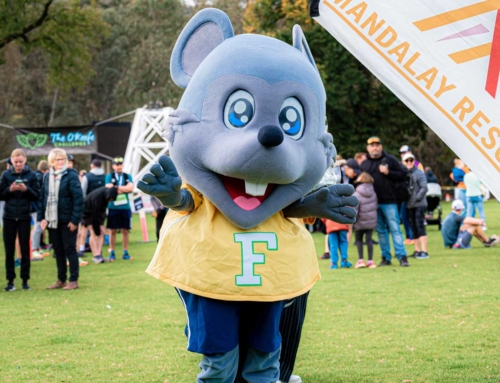We’ve spoken to Nicky from At The Bar about why every run type matters when you’re getting marathon ready!
“If you’re training for the O’Keefe Challenge this year, remember that not all runs are created equal. To crush your race goals, it’s key to include a mix of these 4 types of runs in your plan:

Long Runs
Why they’re important: Builds endurance by training your body to go the distance and burn fuel efficiently.
How to do it: Run at an easy, ‘conversational pace’ (Zone 2) and gradually increase mileage each week. These runs prepare your legs (and mind!) for the hours you’ll spend on race day.
Tempo Runs
Why they’re important: Boosts your lactate threshold, so you can run faster for longer without burning out.
How to do it: After a warm-up, run at a ‘comfortably hard’ pace (about 75–85% effort) for 20–40 minutes. It’s challenging but sustainable—and it makes marathon pace feel easier!
Hill Repeats
Why they’re important: Builds strength, power, and mental toughness while improving running mechanics.
How to do it: Sprint uphill for 20–45 seconds, jog back down, and repeat. Hills simulate the effort of late-race fatigue and make you a stronger runner overall.
Easy Runs
Why they’re important: Promote recovery, prevent overtraining, and improve aerobic capacity.
How to do it: Run at a slow, relaxed pace (Zone 1–2). These runs might feel ‘too easy,’ but they’re essential to stay fresh and avoid injury.
The Balance: Each run plays a unique role in preparing your body for marathon success.
Together, they improve endurance, speed, strength, and recovery—everything you need to feel strong on race day!
And don’t forget strength training is a game-changer for runners!
Here’s how it complements your running:
- Builds Running-Specific Strength
Strength training targets key muscles like your glutes, hamstrings, quads, and calves—critical for powering your stride and improving efficiency. Stronger muscles mean better endurance and faster speeds without over-fatiguing. - Reduces Injury Risk
Weak or imbalanced muscles (like underactive glutes) can lead to injuries like runner’s knee or shin splints. Strength training corrects these imbalances and builds resilience, helping your body handle the repetitive impact of running. - Improves Running Economy
Think of it as running more efficiently. Exercises like squats, deadlifts, and lunges improve force production, so you use less energy with every stride. That means you can sustain faster paces longer! - Enhances Power and Speed
Plyometrics (like box jumps) and heavy lifts increase explosive power, which translates into stronger pushes off the ground and faster acceleration. Perfect for those hill sprints or a strong finish on race day. - Boosts Core Stability
A strong core stabilizes your entire body, especially during long runs. It helps maintain proper posture, reduces energy leakage, and improves balance, even when fatigue sets in.
Pro Tip:
Aim for 2–3 strength sessions per week focused on compound lifts, single-leg exercises, and core work. Keep it consistent, and you’ll notice stronger, faster, and injury-free kilometres ahead!
Contact the team from At The Bar Fitness to get your running specific program for the gym.
73 & 75 High Street, Heathcote
atbfitnessheathcote@gmail.com
0437 008 999






